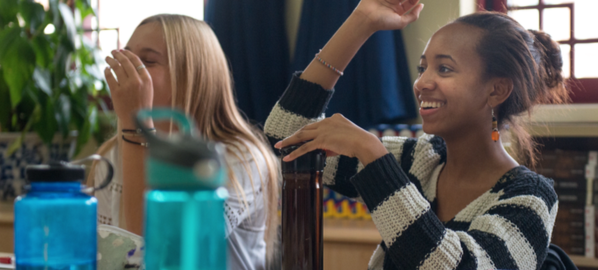We live in the ‘urgent and important’ world of school. It’s down to us to get rid of things that don’t fit our work, in order to free up headspace for the ambitious task ahead.
“[In the Passion Project] I felt like I could make decisions that mattered” Conor Newell, Grade 7.
“I spent just one day shadowing our students. We’ve got incredibly good teachers, but… I was just exhausted by the end of the day, exhausted from sitting for hours.”
Juan Saavedra, Head of Upper School.
For a year, we’ve been testing whether student voice and choice should be a key goal, and how we should go about it. “This is not an easy strategy,” believes Bob Cofer, Mathematics teacher and Board member. “The progress of this strategy is important, particularly given the relatively transient nature of our students. The continuity of support to teachers and students in making this happen is what makes it ultimately successful.”
The first step is to define where that support should go, and what form it should take. We have already started an analysis of what we already do well, and where there are gaps as well as evaluating which practices and structures need to be thrown out altogether.
Laurie McLellan, Director at Nanjing International School, sees a significant task ahead to realise a goal where every student succeeds through forming their own genuinely personal learning journey:
We want our educators to live less in the ‘urgent and important’ world in which schools tend to operate, and start taking time to read, research and plan collaboratively for a more challenging and engaging learning experience.
In mathematics, this focus has allowed educators to really concentrate on skill development, in addition to ‘getting through the content’. In his recent prototype of student choice in statistics, Bob Cofer saw a number of Grade 9 students who lacked the confidence and ability to make the kinds of choices we were asking them to.
“Self-directed learning is a skill – remember those first two years of university? The skills we have to give to the students are different. With this first analysis, it’s clearly something we’re going to have to build up with them through the grades. In our prototype, the students who’ve found this the most tricky were those who had trouble with organising their work – particularly their time management. That’s something we can now work on with them.”
“Having this as a whole-school strategy means that we can work on it, not just in Grade 9, but all the way through the school. For students to get anything more out of this prototype, we need to work on it in every grade level, and this strategy allows us to make time to achieve this.”
“We know we’re doing something different, because there’s a certain level of discomfort in doing something that’s out of our normal comfort zone,” says Laurie McLellan. “But this is much more meaningful, and it will be much more lasting for this one reason:
“Now we’re building in the thinking time and professional development to give these strategic projects the best environment to succeed.”
This work is licensed under a
Creative Commons Attribution, Non Commercial, ShareAlike 3.0 China Mainland License: http://creativecommons.org/licenses/by-nc-sa/3.0/cn/
First published in 2015 by NoTosh Publishing.
NoTosh and the notoshTM mark are Registered Trademarks.
